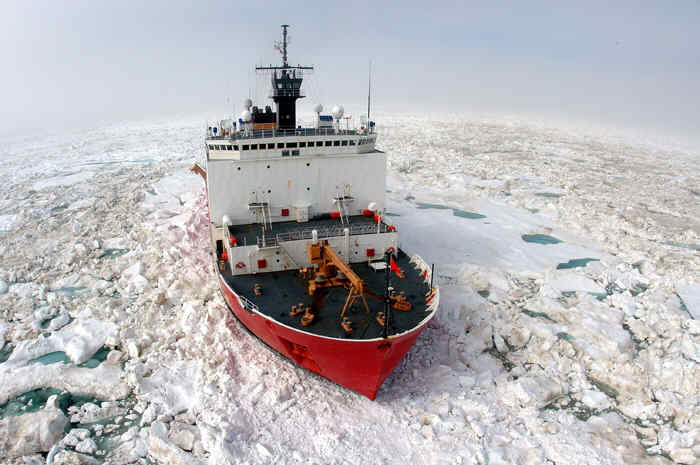
I couldn't help but wonder this week as Coast Guard crews braved Alaska's dangerous seas to regain control of Shell's drilling rig and evacuate its crew: Why is our federal government bending over backwards to let Shell drill for oil in the Arctic Ocean?
This week's incident with the Kulluk in the Gulf of Alaska was yet another frightening reminder of just how unruly Alaskan waters can be. Even farther north it's not unusual for the Arctic's ice-choked waters to have 20- to 30-foot swells, pervasive fog and sudden storms. These waters can never be made safe for oil drilling. The conditions are dangerous and risky, and an oil spill in the Arctic would be devastating. Not only are people at risk but the Arctic Ocean is also home to polar bears, whales and rich biological diversity that would be destroyed along with the Native Alaskan communities that depend on the ocean for their subsistence.
Although the Obama administration has approved Shell's drilling plans, it seems pretty clear they're not ready to handle the harsh Arctic environment. The Kulluk breaking free from its tow lines the other day is just the most recent in a series of Arctic drilling follies. In July 2012 Shell's other drilling rig, the Noble Discoverer, slipped its anchor and nearly ran aground in Alaska's Dutch Harbor. And in a separate incident, during testing, Shell's oil spill response vessel dropped its containment dome, which crushed it like a beer can. Shell has also had difficulty meeting standards for its oil spill response vessel, its air permits and its drill rig.
Despite failing to prove readiness for Arctic drilling, the Obama administration has practically ushered Shell into the Arctic as part of the president's "all of the above" strategy -- even on the heels of the catastrophic BP oil spill in the Gulf of Mexico.
Drilling for oil in the Arctic Ocean can never be made safe -- that much was made abundantly clear with the incident with the Kulluk -- and we should leave well enough alone. The Far North is one of the last remaining, truly wild places on Earth, too untamed to be industrialized, too precious and fragile to risk catastrophe.
Photo Coast Guard Icebreaker courtesy of U.S. Arctic Research Commission